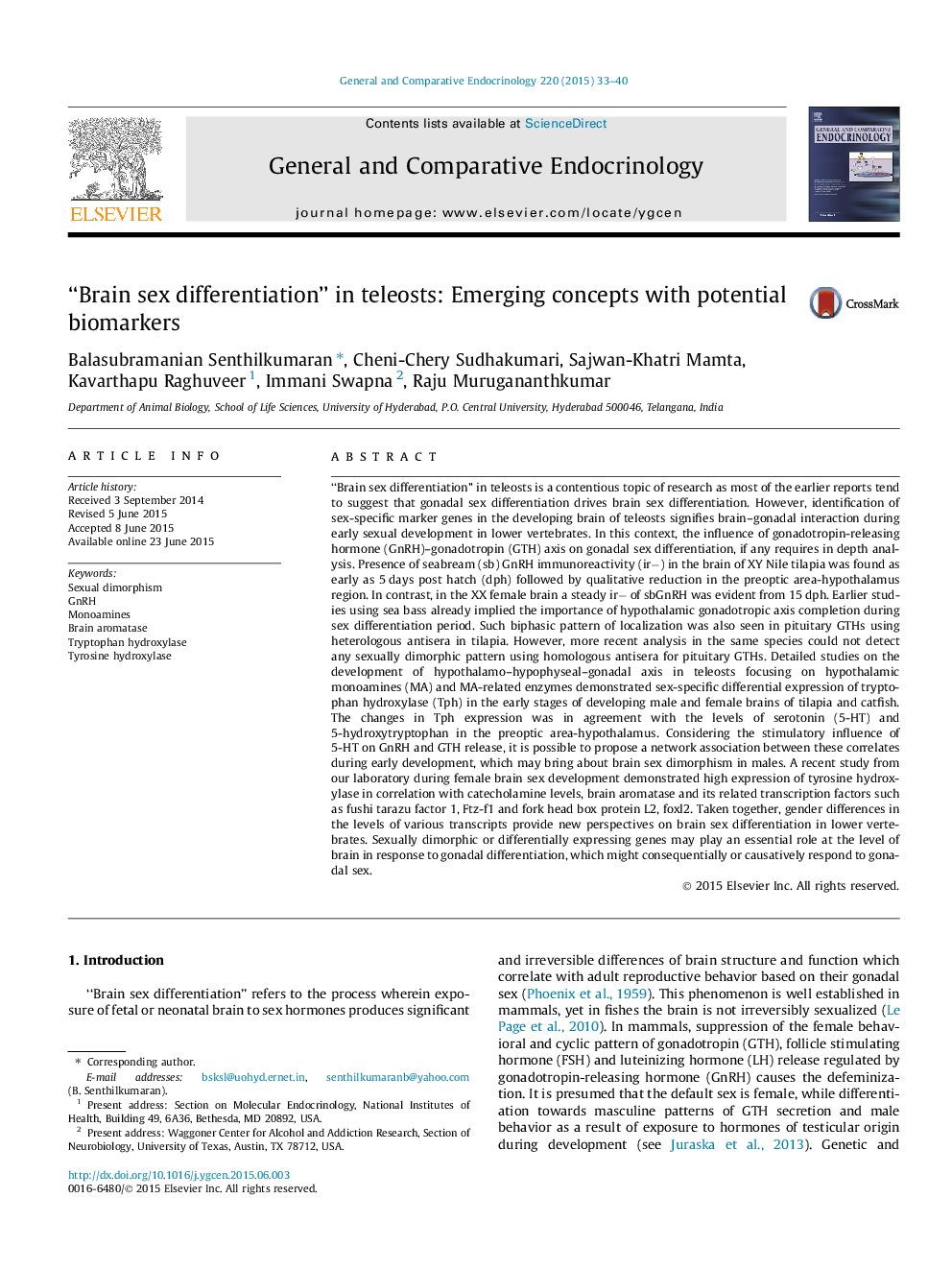| کد مقاله | کد نشریه | سال انتشار | مقاله انگلیسی | نسخه تمام متن |
|---|---|---|---|---|
| 2799937 | 1568886 | 2015 | 8 صفحه PDF | دانلود رایگان |

• Brain sex differences in GnRH is seen during gonadal differentiation in teleosts.
• Gender differences in the levels of various transcripts contribute for brain sex differentiation in teleosts.
• Hypothalamic monoamines and related enzymes show brain sex dimorphism.
• Involvement of brain aromatase and other related factors in brain sex differentiation.
“Brain sex differentiation” in teleosts is a contentious topic of research as most of the earlier reports tend to suggest that gonadal sex differentiation drives brain sex differentiation. However, identification of sex-specific marker genes in the developing brain of teleosts signifies brain–gonadal interaction during early sexual development in lower vertebrates. In this context, the influence of gonadotropin-releasing hormone (GnRH)–gonadotropin (GTH) axis on gonadal sex differentiation, if any requires in depth analysis. Presence of seabream (sb) GnRH immunoreactivity (ir−) in the brain of XY Nile tilapia was found as early as 5 days post hatch (dph) followed by qualitative reduction in the preoptic area-hypothalamus region. In contrast, in the XX female brain a steady ir− of sbGnRH was evident from 15 dph. Earlier studies using sea bass already implied the importance of hypothalamic gonadotropic axis completion during sex differentiation period. Such biphasic pattern of localization was also seen in pituitary GTHs using heterologous antisera in tilapia. However, more recent analysis in the same species could not detect any sexually dimorphic pattern using homologous antisera for pituitary GTHs. Detailed studies on the development of hypothalamo–hypophyseal–gonadal axis in teleosts focusing on hypothalamic monoamines (MA) and MA-related enzymes demonstrated sex-specific differential expression of tryptophan hydroxylase (Tph) in the early stages of developing male and female brains of tilapia and catfish. The changes in Tph expression was in agreement with the levels of serotonin (5-HT) and 5-hydroxytryptophan in the preoptic area-hypothalamus. Considering the stimulatory influence of 5-HT on GnRH and GTH release, it is possible to propose a network association between these correlates during early development, which may bring about brain sex dimorphism in males. A recent study from our laboratory during female brain sex development demonstrated high expression of tyrosine hydroxylase in correlation with catecholamine levels, brain aromatase and its related transcription factors such as fushi tarazu factor 1, Ftz-f1 and fork head box protein L2, foxl2. Taken together, gender differences in the levels of various transcripts provide new perspectives on brain sex differentiation in lower vertebrates. Sexually dimorphic or differentially expressing genes may play an essential role at the level of brain in response to gonadal differentiation, which might consequentially or causatively respond to gonadal sex.
Journal: General and Comparative Endocrinology - Volume 220, 1 September 2015, Pages 33–40